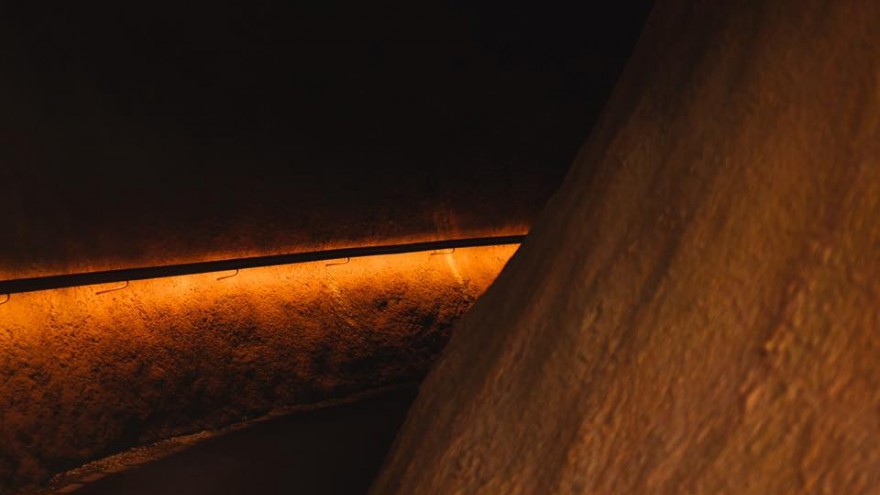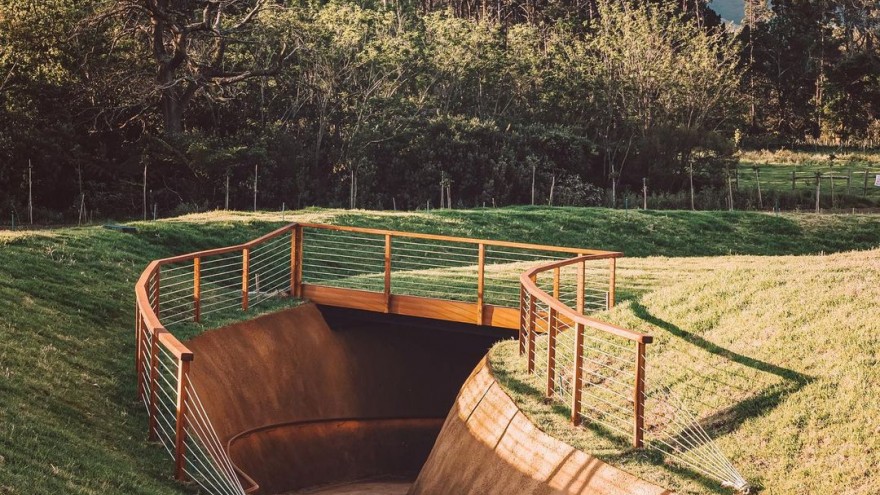‘Despite the integral role soil plays in the entire human experience - from being the incubator in which our food is grown and the foundations on which we build our homes, to receiving the bodies of our dearly departed - we spend remarkably little time pondering its presence.’
It was this realisation that moved experiential designers The Dream Commission to create EARTHBOX, a 24-metre-long immersive chamber five metres underground, on Lourensford Wine Estate in Somerset West.
‘When we started dreaming about creating a space that could facilitate uninterrupted contact between humans and the earth, we found our imaginations reaching for something well beyond the homely and the known,’ explained The Dream Commission. ‘We found ourselves asking the question: What if we could experience the earth from inside?’
In EARTHBOX, on a previously farmed field at Lourensford in the Cape winelands, the ‘invisible realm’ beneath our feet is unlocked, and raw earth walls and floors bring visitors into direct content with the textures, scents and (lack of) sounds of earth that is millions of years old. The site has three distinct layers: topsoil, transported soils and iron-rich lateritic soils, each with its own distinct colour and composition.
The creation of the immersive exhibition involved numerous engineers, environmentalists, geologists, artists and designers, including engineer Henry Fagan, who is best known for his Boomslang tree canopy walkway in Kirstenbosch National Botanical Garden in Cape Town and the Bosjes Chapel on a wine farm near the Western Cape town of Ceres.
Teams of geologists and structural engineers spent months ‘reading’ the earth, interpreting the signs of different materials/densities and monitoring it for movement, then creating a water-drainage system, and a roofing structure that would support the weight of visitors and the earth above.
The unusual exhibition is set to host musical events, and yoga and meditation sessions. It will be open to the public for six months, from November 2023 to the end of April 2024, after which all the excavated earth, temporarily used in berms (raised barriers) and landscaping, will be returned to its original site in its separate layers, and the construction materials will be repurposed.
Read more








